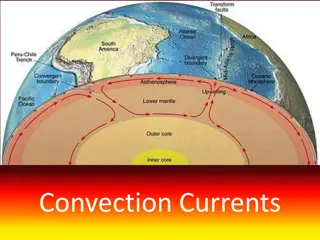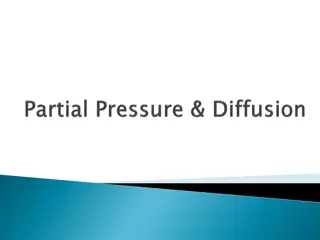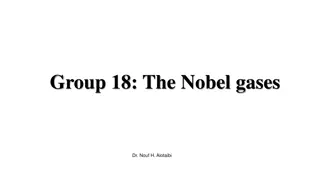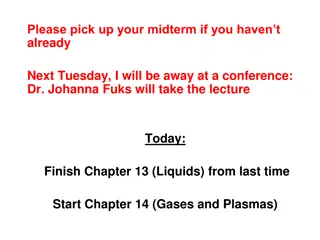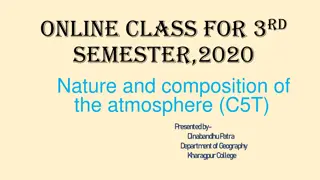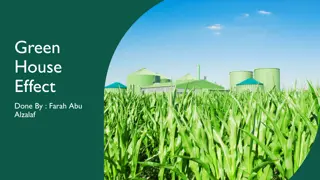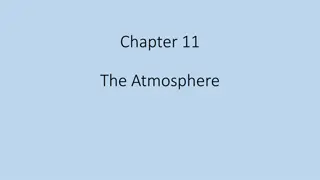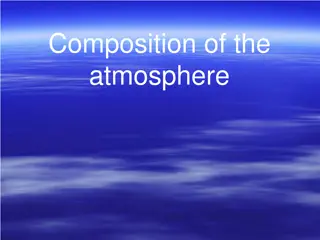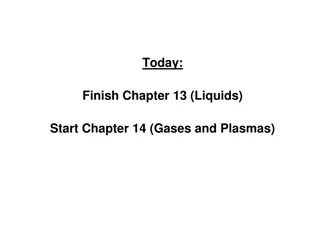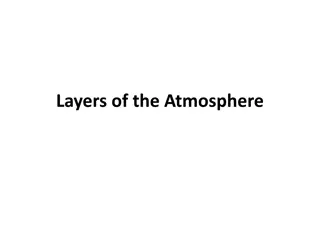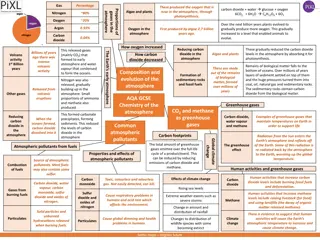Understanding Gases in the Earth's Atmosphere
Explore the composition and layers of the Earth's atmosphere, including the significance of gases like nitrogen, oxygen, water vapor, and carbon dioxide. Learn how human activities impact atmospheric composition and how changes in temperature and pressure affect weather predictions. Discover the role of air pressure in weather forecasting and the measurement of atmospheric pressure using a barometer. Dive into the dynamics of the Earth's atmosphere and its implications for climate change.
Download Presentation

Please find below an Image/Link to download the presentation.
The content on the website is provided AS IS for your information and personal use only. It may not be sold, licensed, or shared on other websites without obtaining consent from the author. Download presentation by click this link. If you encounter any issues during the download, it is possible that the publisher has removed the file from their server.
E N D
Presentation Transcript
Chemistry GASES IN THE ATMOSPHERE
Layers of the Atmosphere Troposphere Where our weather occurs 78% Nitrogen 21% Oxygen 1 % Argon .03% Carbon Dioxide Studies in Ice Cores can show ancient atmosphere on Earth.
Water Vapor Considered a greenhouse gas Humidity Keeps Earth at a relatively constant temperature 1 3% water vapor is average for Earth.
Changes in Atmospheric Composition- [CO2] Increase Human Anthropogenic CO2increase Burning Fossil Fuels Driving cars Factories Cutting down rain forests Natural Volcanic eruptions Fires Decomposition
Layers of the Atmosphere Our atmosphere changes in interesting ways as it increases in altitude. Closest to the Earth: Trophoshere Stratophere Mesosphere Thermosphere Exosphere Farthest away, closest to Space
Our Atmosphere changes in 3 ways: Temperature Air Pressure [mmHg] Mass of Air Today we will only graph the temperature changes with altitude.
Skill Building Activity - Excel Click on Programs on the Windows Icon Click the Microsoft Office 2013 icon Click on the green Excel Icon Follow the instructions on the paper after Mrs. McAllister does a quick Demo.
Air in our Atmosphere Air has Matter Air exerts Pressure Demo Balloon with Vanilla Air Pressure is measured by a Barometer 1 atm At sea level 1 atm = 100 kPa = 760 mmHg What happens when you increase in elevation? How can a change in air pressure predict our weather?
Do the Math Barometric Pressure reads 27.2 Hg What is the atmospheric Pressure in mmHg, as a result, Predict the weather. Given: 1 = 25.4 mm 1 = 25.4 mm x 27.2 Hg = 690 mmHg What is the atmosphereic Pressure in , as atm? 1 atm = 760 mmHg = .90 atm X = 690 mmHg What is the atmospheric Pressure in kPa? 1 atm = 100 kPa = 90 kPa .90 atm = X kPa
Computer Simulation Activity Google.com pHET - Chemistry Practice running each of the 3 simulations: States of Matter Balloons & Buoyancy Gas Properties Take notes on what you learned for each one.
Project Solutions to our Pollution .25 Credits Paper 2 pages Air Pollution can be dangerous for health reasons & to the environment. Research a current event within the last year that discusses the dangers of air pollution. Example: China s Air quality What is causing China s pollution? How long has it been going on? Why is it a problem? How did it get so bad? What are three possible steps toward a solution?
Works Cited Chemistry in the Ces in ommunity, p. 300 333, 2006, W.H. Freeman Co.







